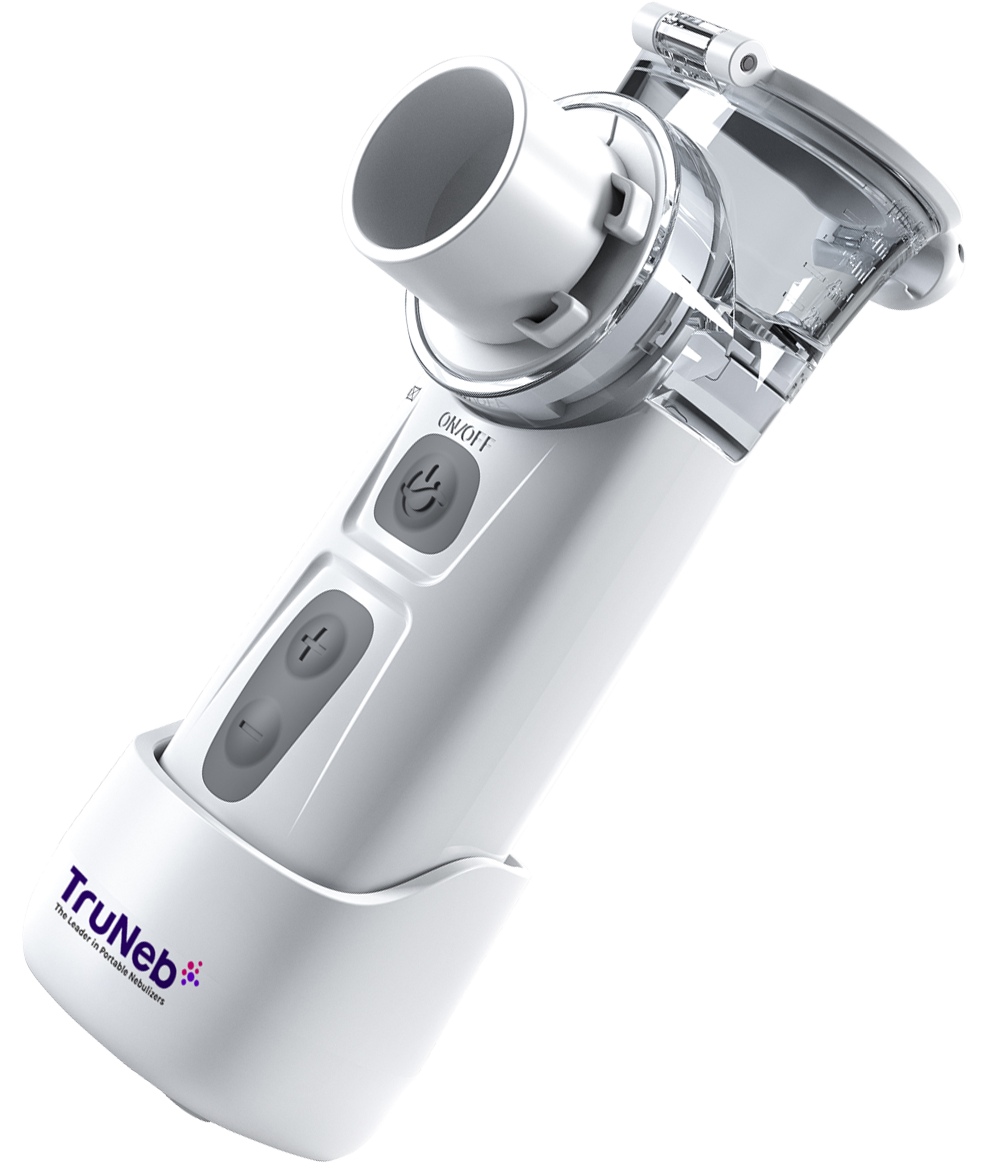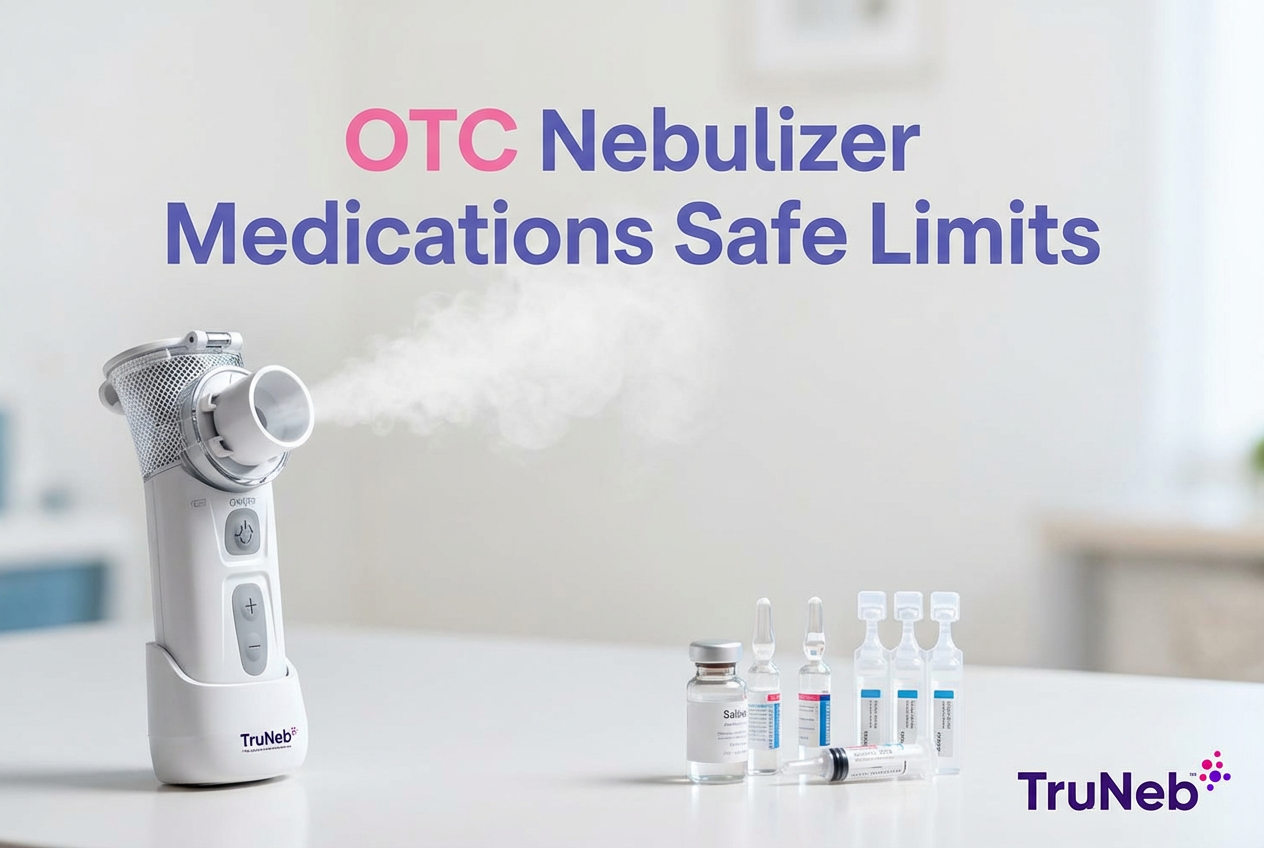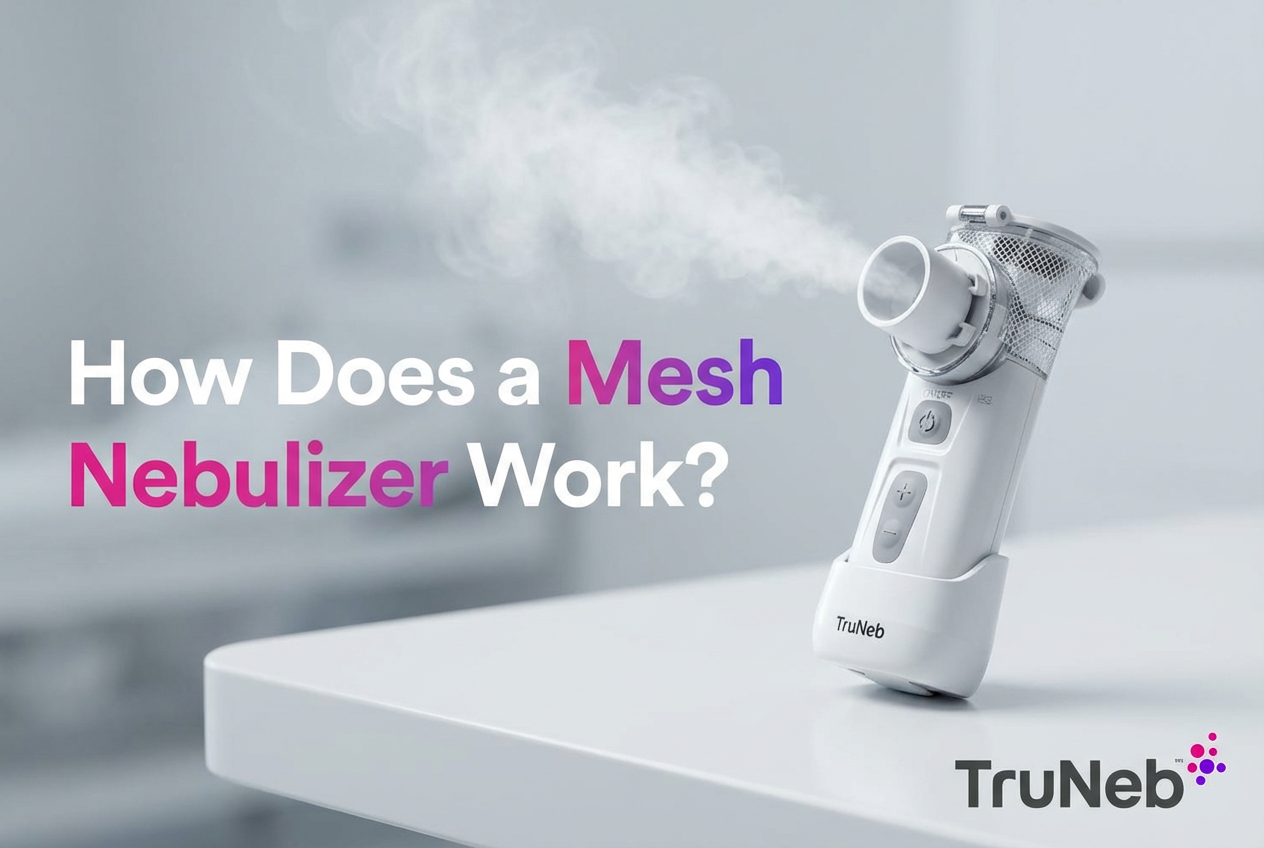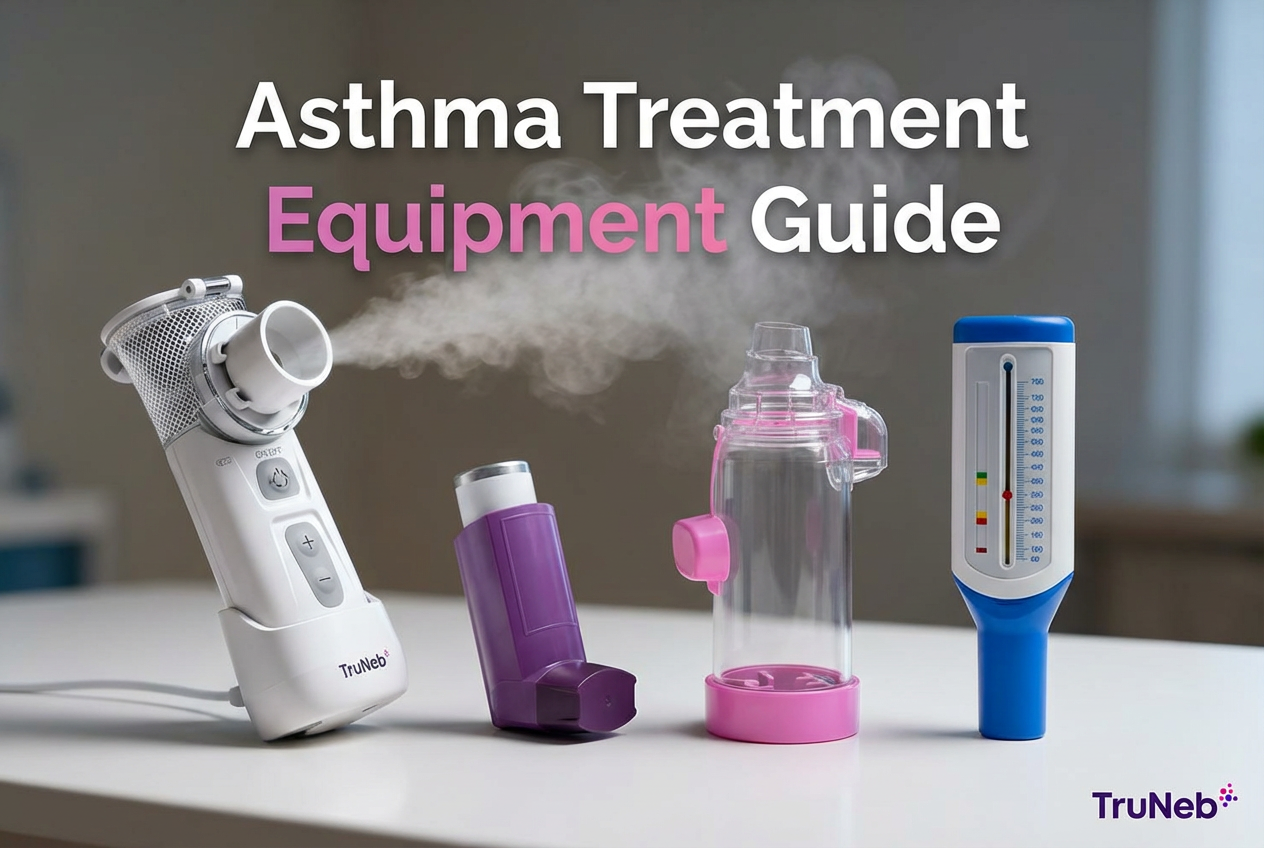On this page
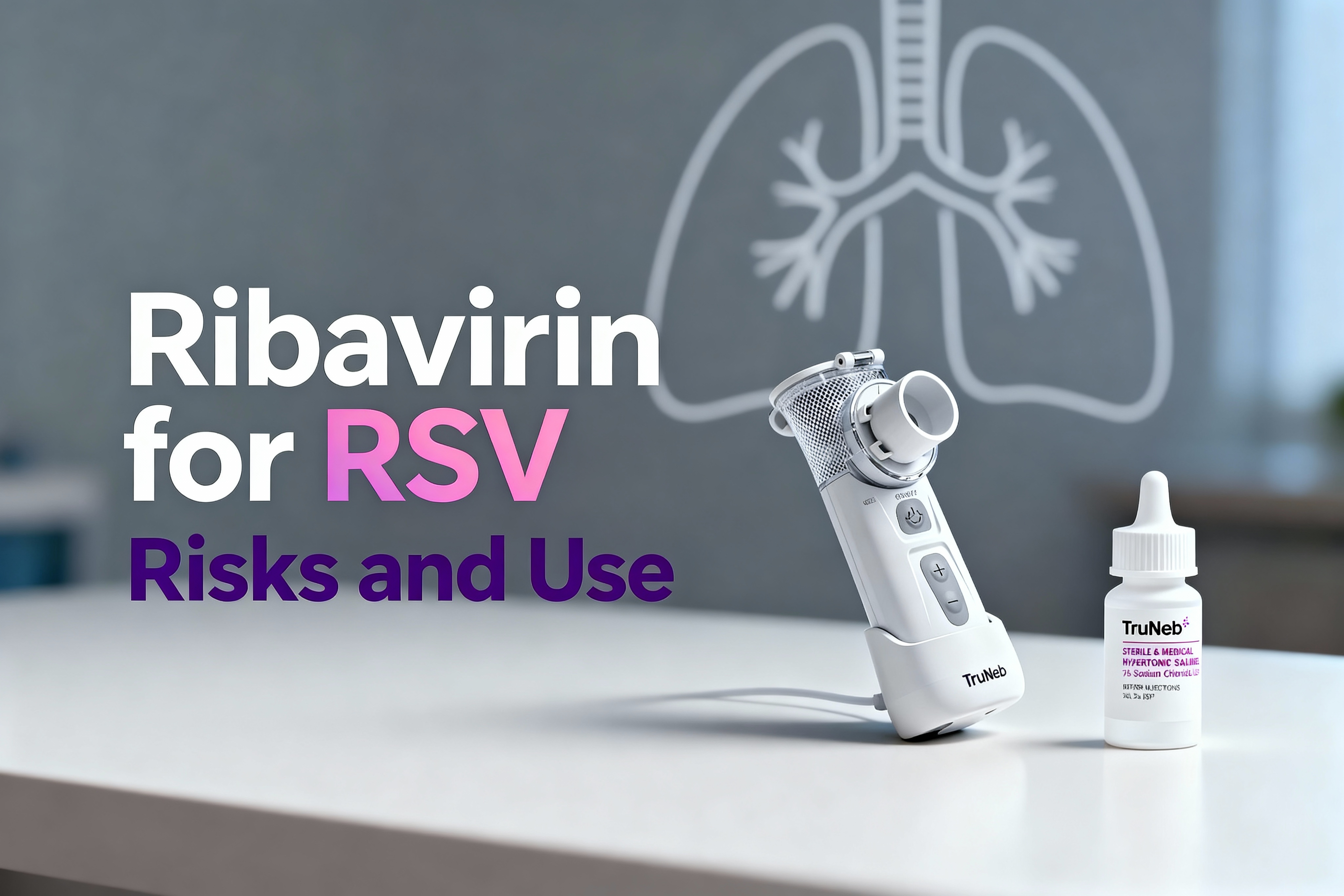
Ribavirin is an antiviral medication that can be used to treat Respiratory Syncytial Virus (RSV), a common virus that infects the lungs and breathing tubes.
RSV is usually handled with supportive care only. Most babies, kids, and adults with RSV never receive an antiviral drug at all. They get rest, fluids, and help with breathing if they need it.
Ribavirin is different. It's an older antiviral that has activity against RSV and other RNA viruses. In its inhaled form (brand name Virazole), ribavirin is FDA-approved for use in hospitalized infants and young children with severe RSV lower respiratory tract infections.
In adults, any use of ribavirin for RSV is off-label and guided by hospital or transplant team protocols, not by a broad national standard.
Because ribavirin comes with significant side effects, high cost, and limited proof that it helps most patients, doctors reserve it for rare situations where the risk of severe RSV disease is very high. For most people with RSV, ribavirin is a last-resort option rather than a routine treatment.
Supportive care remains the main treatment for RSV for nearly everyone. Ribavirin is an antiviral reserved for rare, very severe RSV cases, while most people are treated with supportive care alone.
Talk to your doctor before trying any antiviral medication, including ribavirin.
Disclaimer: This article is for informational purposes only and isn't a substitute for professional medical advice, diagnosis, or treatment. Always talk with your doctor about your symptoms and treatment options.
Who Actually Needs Ribavirin for RSV?
Most people with RSV, even if they feel very sick, will never be offered ribavirin. The drug is usually saved for patients whose immune systems can't fight the virus well on their own.
Here are the main groups where specialists sometimes consider ribavirin for RSV:
High-risk immunocompromised adults
These are patients whose immune systems are very weak, such as:
- People who have had a hematopoietic stem cell transplant (HSCT) or bone marrow transplant
- Lung transplant or other solid organ transplant recipients
- People receiving chemotherapy for leukemia, lymphoma, or other blood cancers
In these groups, RSV can move from the upper airway down into the lungs and cause severe lower respiratory tract infection. Some studies report very high death rates, sometimes up to 80%, in untreated high-risk patients who develop RSV pneumonia. Very frail older adults with serious chronic lung or heart disease can also be at higher risk from RSV, and specialist teams tend to monitor them especially closely.
Because of this, hospital guidelines from UCSF and similar transplant centers suggest considering inhaled or oral ribavirin when an immunocompromised patient has RSV in the lungs or is quickly getting worse.
Certain high-risk infants and children
Inhaled ribavirin is FDA-approved for hospitalized infants and young children with severe RSV. In practice, it's usually considered for:
- Babies with serious congenital heart disease
- Children with chronic lung disease of prematurity
- Children with severe immune problems
Even in these groups, use is uncommon. Reviews note that the American Academy of Pediatrics doesn't recommend routine ribavirin for typical RSV bronchiolitis because benefits are unclear compared with its risks and cost.
Who usually does not get ribavirin
Otherwise healthy babies, toddlers, teens, and adults with RSV — even those needing a short hospital stay for oxygen — almost never get ribavirin. Supportive care is enough in most cases.
Any choice to use ribavirin is made by a specialist team after carefully weighing the risks and possible benefits for that one patient.
Never ask to start or stop ribavirin on your own; decisions about this drug must be made with your medical team.
How Ribavirin Works Against RSV
RSV is an RNA virus. To spread in your body, it has to copy its RNA over and over inside your cells.
Ribavirin is a broad-spectrum antiviral medicine, sometimes described as a nucleoside analog, meaning it looks a bit like one of the building blocks the virus uses to copy its RNA. When ribavirin is present, it interferes with that copying process.
Studies show that ribavirin can:
- Inhibit the viral RNA polymerase (the enzyme RSV uses to copy its RNA)
- Disrupt the start and growth of new viral RNA chains
- Increase the number of errors in viral RNA, which can weaken the virus
In simple terms, ribavirin makes it harder for RSV to make copies of itself. That can lower the amount of virus in the airways.
But RSV illness is caused not only by the virus itself, but also by swelling and mucus in the small airways. That's part of why ribavirin isn't a magic fix and why its benefits are mainly seen in the sickest, highest-risk patients.
Any decision to use ribavirin should be guided by a specialist who understands both the drug and your overall health.
Forms of Ribavirin for RSV: Inhaled vs. Oral
Ribavirin for RSV can be given in different ways. The two main forms are inhaled (aerosolized) and oral (pills or capsules).
Inhaled ribavirin (Virazole)
Inhaled ribavirin, also called aerosolized ribavirin or Virazole, is the classic way this drug has been used for RSV in children.
- It's given only in the hospital.
- A special nebulizer system, called a Small Particle Aerosol Generator (SPAG) machine, turns the solution into a fine mist.
- The child breathes the mist through a mask, hood, or tent for hours at a time.
The FDA approved inhaled ribavirin in the 1980s for hospitalized infants and young children with severe RSV lower respiratory tract infection. Mayo Clinic and Cleveland Clinic both describe it as a medicine used only in the hospital, under close monitoring.
Possible advantages:
- Delivers drug straight into the lungs
- Limits some whole-body side effects compared with high oral doses
Big drawbacks:
- Very high cost for the drug and equipment
- Complex setup and need for isolation rooms
- Exposure risks for healthcare workers
Because of this, most hospitals avoid aerosolized ribavirin or use it only when there is no good alternative.
Oral ribavirin (pill form)
Oral ribavirin (tablets or capsules) isn't FDA-approved specifically for RSV, but a number of adult centers now use it off-label for certain high-risk patients. That means using oral ribavirin for RSV in adults is an off-label decision made by a specialist team, not a standard treatment for most people.
University of Nebraska Medical Center guidelines describe weight-based oral dosing over a short course for adults, with the exact dose and duration tailored to kidney function and other health issues by a specialist team.
Why doctors sometimes choose oral ribavirin:
- Significantly lower cost than inhaled ribavirin
- Easier to give in transplant units or outpatient settings
- No need for a large aerosol machine or special room
Trade-offs:
- More drug goes through the whole body, which raises the risk of side effects like anemia
- Still needs close lab monitoring
- Use for RSV is off-label, based on smaller studies and local protocols
Guidelines from centers such as UCSF note that, as the price of aerosolized ribavirin rose, oral ribavirin became a more practical option for some adult transplant and cancer patients.
This table summarizes how inhaled, oral, and IV ribavirin are usually used for RSV so you can see the differences at a glance.
| Form | Where it's given | Typical RSV use | Pros | Limitations |
|---|---|---|---|---|
| Inhaled ribavirin (Virazole) | Hospital only, using a SPAG nebulizer system | Severe RSV lower respiratory tract infection in high-risk infants and young children | Delivers medicine directly to the lungs, can reduce whole-body exposure | Very expensive, complex setup, staff exposure concerns, used in relatively few centers |
| Oral ribavirin (tablets or capsules) | Transplant or cancer units in the hospital, sometimes outpatient under close supervision | Selected high-risk adult transplant or blood cancer patients, off-label use | Lower cost than inhaled form, easier to give without special equipment | Whole-body side effects like anemia, requires blood test monitoring, not FDA-approved for RSV |
| IV ribavirin | Hospital, usually in intensive care or specialized units | Rarely for RSV; used more for other severe viral infections when specialists judge it necessary | Delivers medicine directly into the bloodstream | Very limited RSV data, potential for significant side effects, reserved for exceptional cases |
What about IV ribavirin?
Intravenous ribavirin has been used for some other severe viral infections, but it's rarely used for RSV. Most RSV treatment discussions focus on inhaled or oral ribavirin; IV use is unusual and generally reserved for other severe viral infections.
In real-world practice, inhaled ribavirin is almost entirely limited to hospitalized children, while oral ribavirin is the form adult transplant and cancer centers sometimes use off-label.
Only your specialist team can decide if any form of ribavirin makes sense for your situation.
Does Ribavirin Help RSV? What the Evidence Shows
Families often ask a simple question: does ribavirin actually work for RSV?
The honest answer is that ribavirin can help some very high-risk patients, but hasn't shown clear benefit for most routine RSV cases.
Evidence in immunocompromised adults
Most of the encouraging data come from people with weakened immune systems, such as stem cell or lung transplant recipients.
A 2019 review of studies in transplant and cancer patients found that ribavirin treatment, especially when started early and before a patient needed a ventilator, was linked with:
- Lower risk of RSV moving from the upper airway into the lungs
- Lower death rates compared with historical patients who did not receive ribavirin
Most of these studies are observational rather than large randomized trials, so results should be interpreted cautiously. More recent analyses in patients with blood cancers and HSCT suggest that ribavirin can be a reasonable option for RSV lower respiratory tract infection in these groups when no other proven antivirals are available.
The UCSF adult RSV guideline notes that there is no consensus on the best way to use or dose ribavirin, and the overall quality of evidence is limited.
Evidence in infants and otherwise healthy children
In babies and young children without major immune problems, older trials of inhaled ribavirin, and later pediatric reviews, did not show a strong benefit in hospital stay length or long-term outcomes.
A pediatric review points out that ribavirin is the only antiviral ever approved for RSV, yet it is rarely used in children because:
- Benefits in typical bronchiolitis are small or uncertain
- The drug is expensive and logistically hard to give
- It carries important safety concerns for patients and staff
As a result, groups like the American Academy of Pediatrics advise against routine ribavirin in standard RSV bronchiolitis.
The bottom line on effectiveness
For a small group of very high-risk patients, especially those with severe immune suppression, ribavirin can help reduce serious RSV outcomes when used thoughtfully and early.
For most babies, children, and adults with RSV, supportive care works well, and ribavirin hasn't shown enough benefit to justify its risks.
Only your specialist team can weigh the current evidence and decide if ribavirin has a place in your care.
Risks and Side Effects of Ribavirin
Ribavirin isn't a gentle medicine. Its side effects are a big reason it's used so rarely for RSV.
Hemolytic anemia
One of the most important risks is hemolytic anemia. Ribavirin can damage red blood cells and can cause your hemoglobin to drop within the first one to two weeks of therapy.
This can lead to:
- Fatigue and weakness
- Worsening chest pain or shortness of breath in people with heart disease
Because of this, hospital guidelines warn that patients on oral ribavirin need close blood count monitoring, and doctors usually order regular blood tests while someone is taking it. People with significant heart disease or severe anemia might not be able to tolerate it safely.
Pregnancy and birth-defect risk
Ribavirin is strongly teratogenic. That means it can cause birth defects.
- It must not be taken during pregnancy.
- Pregnant people shouldn't handle ribavirin tablets or be exposed to the aerosol.
- Hospitals typically advise people who take ribavirin, and their partners, to use reliable birth control during treatment and for several months afterward.
Hospital policies treat ribavirin as a hazardous drug and require special handling and disposal.
Inhaled ribavirin side effects
For inhaled (aerosolized) ribavirin, side effects can include:
- Worsening breathing or bronchospasm in some patients
- Irritation of the eyes or airways
- Headache or other symptoms in staff exposed to the mist
These problems, along with cost and logistics, are part of why a lot of centers have moved away from aerosolized ribavirin.
Other common side effects
Patients taking ribavirin can also notice:
- Nausea or upset stomach
- Rash or dry skin
- Feeling low in energy or mood
Because of these risks, ribavirin is only given when doctors believe the potential benefit outweighs the harm — usually in very high-risk RSV cases.
Talk to your doctor before starting, stopping, or changing any medication, including ribavirin. Never adjust the dose on your own.
RSV Treatment Today: Guidelines and Alternatives
Ribavirin makes more sense when you see where it fits into overall RSV care.
What guidelines say about ribavirin
Pediatric guidelines, including those from the American Academy of Pediatrics, don't recommend routine ribavirin for standard RSV bronchiolitis. Reviews note that benefits in typical infants are limited, while cost and safety concerns are significant.
For adults, there is no single national standard, but transplant and cancer centers have their own protocols. The UCSF adult RSV guideline, for example, focuses on:
- Identifying very high-risk patients (such as HSCT and lung transplant recipients)
- Considering ribavirin for lower respiratory tract infection in these groups
- Acknowledging that the best dose and route are still uncertain and that evidence is limited
Most adults and children are treated with supportive care alone.
Supportive care as the foundation
Across age groups, medical reviews agree that supportive care is the main treatment for RSV. This includes:
- Making sure the patient is well hydrated
- Providing oxygen when needed
- Using suction to clear mucus from small children’s noses
- Giving breathing support (like high-flow oxygen or ventilation) in intensive care if required
Antibiotics don't treat RSV itself because it is a virus.
Preventing severe RSV
Because treatment options are limited, much of the focus has shifted to prevention for high-risk people.
- Palivizumab (Synagis) is a monthly antibody shot used to help prevent severe RSV in certain high-risk infants, such as very premature babies or those with serious heart disease.
- Nirsevimab is a newer, long-acting antibody designed to protect most infants through a full RSV season with a single dose.
- As of 2023, the CDC also recommends new RSV vaccines for older adults at higher risk to reduce the chance of severe RSV disease and hospitalization.
These antibody shots help prevent severe RSV; they don't treat RSV once someone is already sick. Even so, they can lower the number of people who ever face life-threatening RSV in the first place.
In day-to-day practice, that means most patients rely on careful supportive care, while ribavirin is reserved for rare situations under specialist guidance.
Across age groups, RSV care is built on supportive treatment, with ribavirin reserved for select high-risk patients and modern antibody shots and vaccines helping prevent the worst infections.
Always ask your doctor which options fit your age, health conditions, and risk level.
Supportive Care, Nebulizers, and RSV: Where the TruNeb™ Portable Mesh Nebulizer Fits In
Even though this article focuses on ribavirin, day-to-day RSV care is really built on supportive treatment.
Supportive therapies you might see
In the hospital or at home, care teams usually focus on:
- Keeping fluids up so mucus stays thinner
- Suctioning babies’ noses so they can feed and breathe better
- Giving oxygen if blood oxygen levels drop
- Watching closely for faster breathing or signs of distress
Some hospitals also use nebulized 3% hypertonic saline in infants with bronchiolitis to help loosen thick mucus in the airways. Reviews of RSV care note that, while evidence is mixed, this type of supportive therapy can be part of a broader plan in hospitalized children. At home, hypertonic saline should only be used if your child's doctor specifically prescribes it.
Any nebulized medication, including saline or bronchodilators like albuterol, should only be used if your doctor recommends it. ⚠️ You might see products labeled "steam inhaler" near nebulizers, but these are not meant for breathing prescription medications.
Why a good nebulizer matters
If your child or you are sent home with inhaled treatments, you'll need a nebulizer you can actually live with.
Older jet nebulizers can be:
- Bulky and tied to an outlet
- Noisy enough to scare small children
- Slow to deliver a full dose
Newer mesh nebulizers use vibrating mesh technology to turn liquid into a very fine mist. They're usually:
- Small and handheld
- Quiet enough to use while a child is resting
- Battery powered, so you can use them on the couch, in bed, or on the go
This table compares traditional jet nebulizers and newer mesh nebulizers so you can quickly see how they differ for home use.
| Feature | Jet nebulizer | Mesh nebulizer |
|---|---|---|
| Power source | Plugs into a wall outlet | Usually battery powered or USB rechargeable |
| Size and portability | Larger unit with tubing and a mouthpiece or mask | Small handheld device that's easy to carry |
| Noise level | Can be loud and bothersome for young children | Very quiet, generally tolerated better by kids |
| Treatment time | Can take longer to deliver a full dose | Typically delivers treatments more quickly |
| Typical home use | Common in older home setups or clinic settings | Popular for home use when families want something small and easy to use |
How the TruNeb™ portable mesh nebulizer can help
The TruNeb™ portable mesh nebulizer is an example of this newer style of device. It's designed to deliver doctor-prescribed medications or saline as a fine mist, without the bulk and noise of older machines.
For families dealing with RSV or other lung conditions, a device like TruNeb can make it easier to:
- Give nebulized treatments on the schedule your doctor sets
- Help a child tolerate treatments because the unit is quiet
- Continue supportive care at home after a hospital stay
A nebulizer doesn't cure RSV, and it doesn't replace medical care. It is simply a tool to deliver the inhaled treatments your doctor recommends.
Talk to your doctor before starting any new nebulized medication, including hypertonic saline, and ask if a portable mesh nebulizer like TruNeb fits your treatment plan.

Ribavirin for RSV: Takeaways and Next Steps
Ribavirin has an important but narrow role in RSV care.
For most babies, children, and adults with RSV, careful supportive care is enough, and ribavirin is only considered for rare, high-risk situations under specialist care. Fluids, rest, oxygen when needed, and close monitoring are usually enough, even when the illness feels frightening.
Ribavirin comes into the picture mainly for patients with severe immune problems or complex medical conditions, and even then only under the guidance of a specialist team. It can help in some high-risk cases, but it also carries serious side effects and safety concerns.
⚠️ Call 911 or seek emergency care right away if you or your child has trouble breathing, looks blue around the lips or face, is difficult to wake, or can't keep fluids down.
If you or your child has RSV, the most useful steps you can take are:
- Stay in close contact with your doctor
- Follow their guidance on when to seek urgent care
- Use any prescribed medications or nebulizer treatments exactly as directed
Talk to your doctor before trying a new medication or inhaled treatment, including ribavirin or hypertonic saline. Never attempt to buy or use ribavirin on your own.
If your care team suggests inhaled therapies at home, a portable mesh nebulizer like TruNeb can make treatments simpler and more comfortable, but it should always be part of a plan you build together with your medical team.

